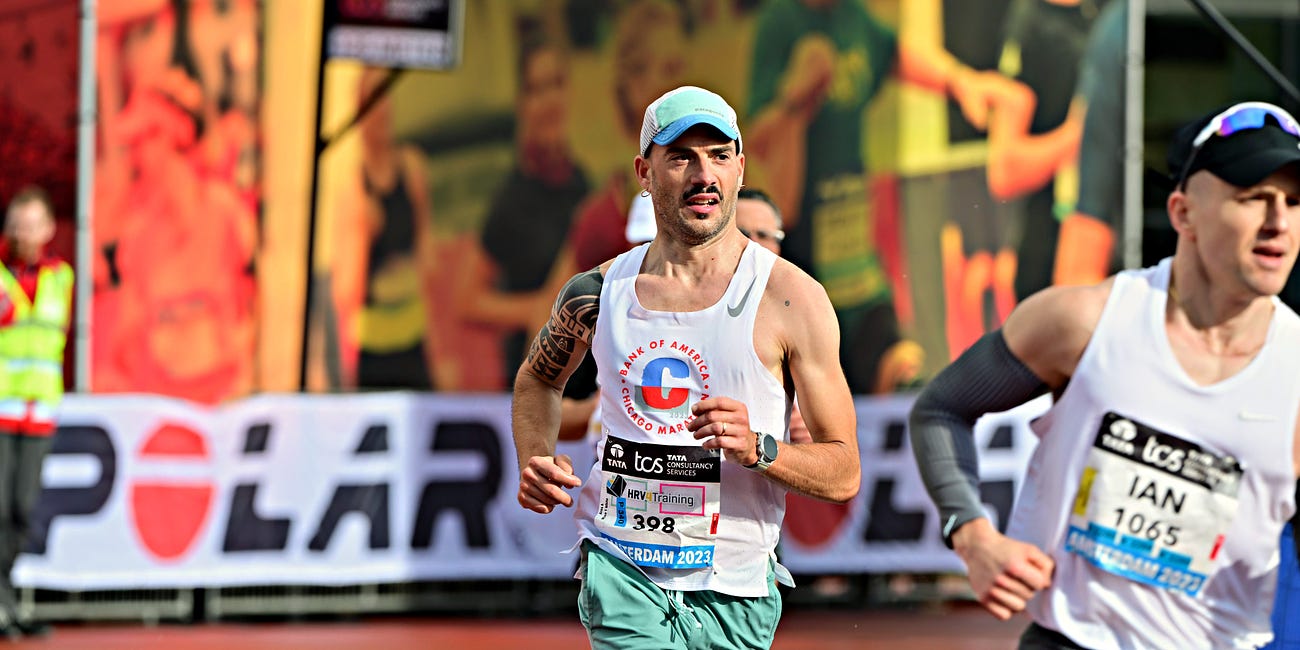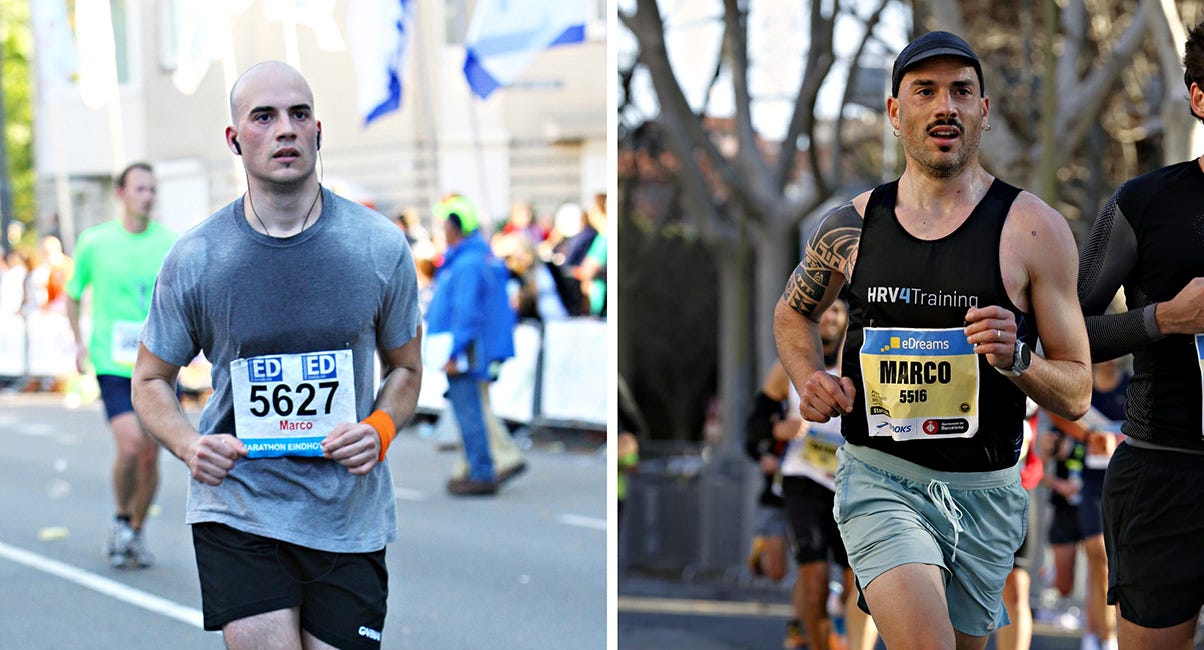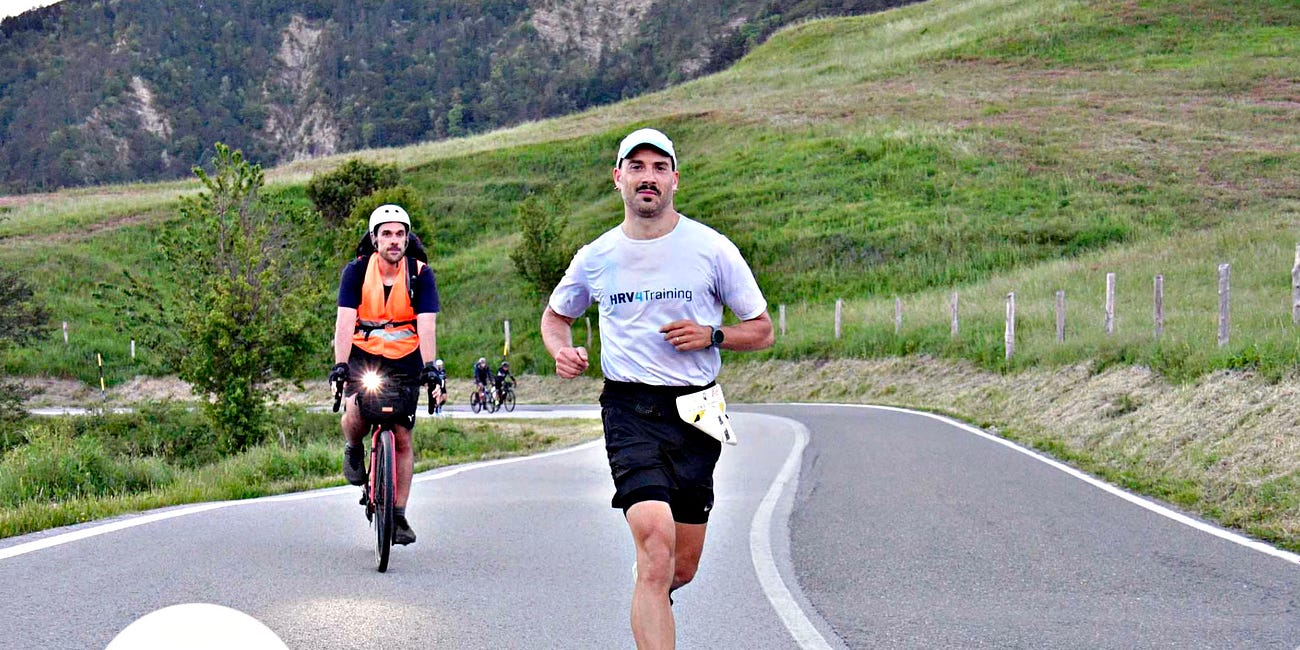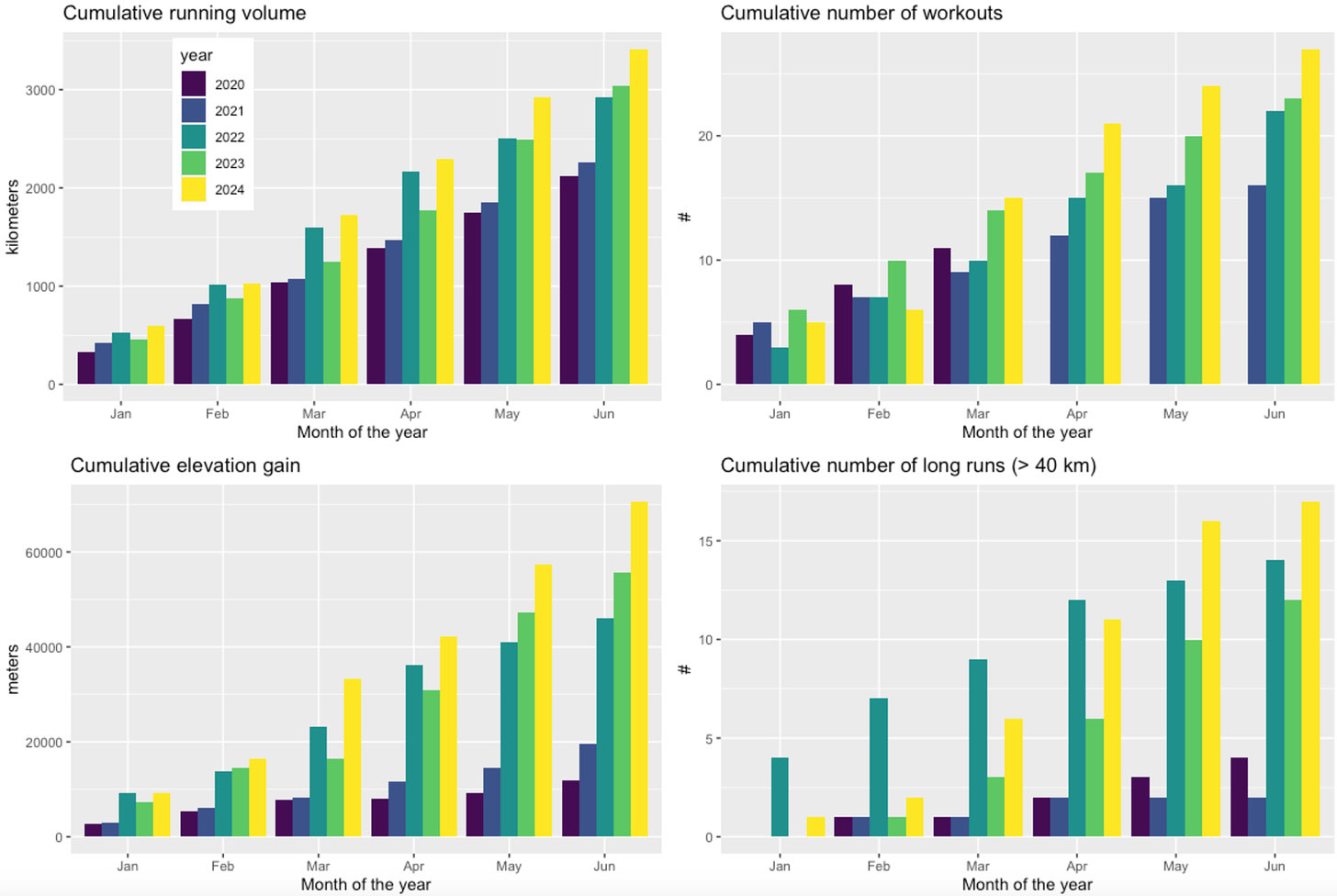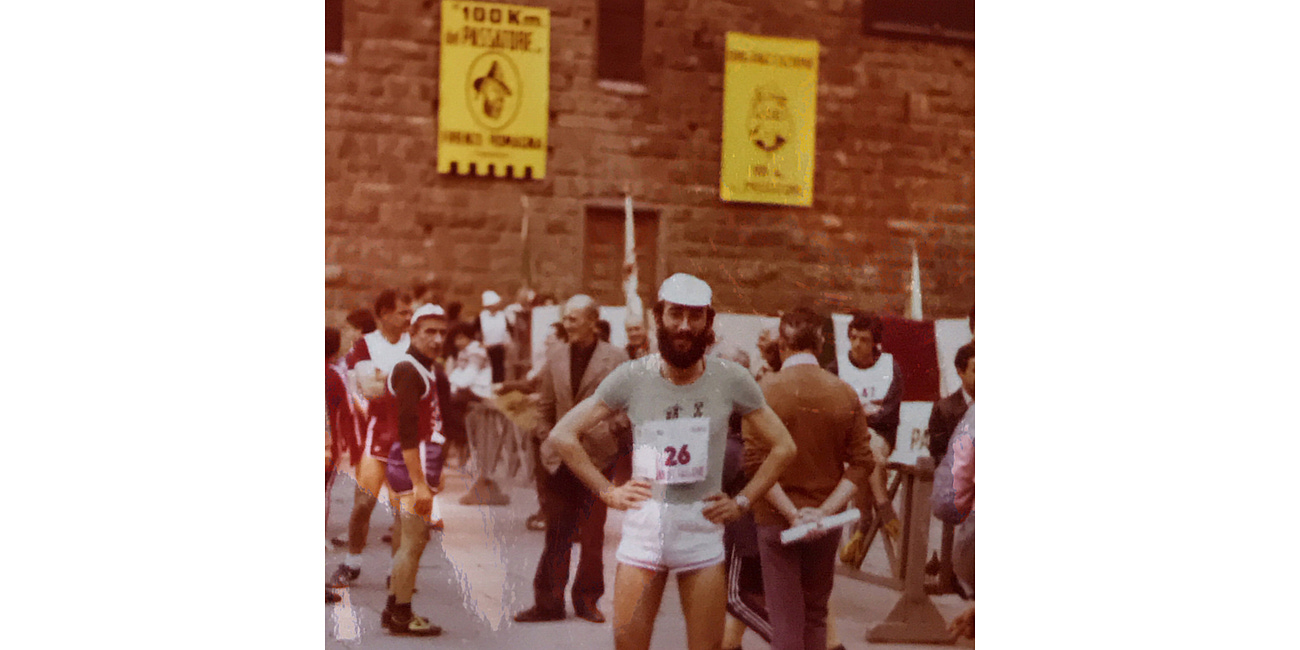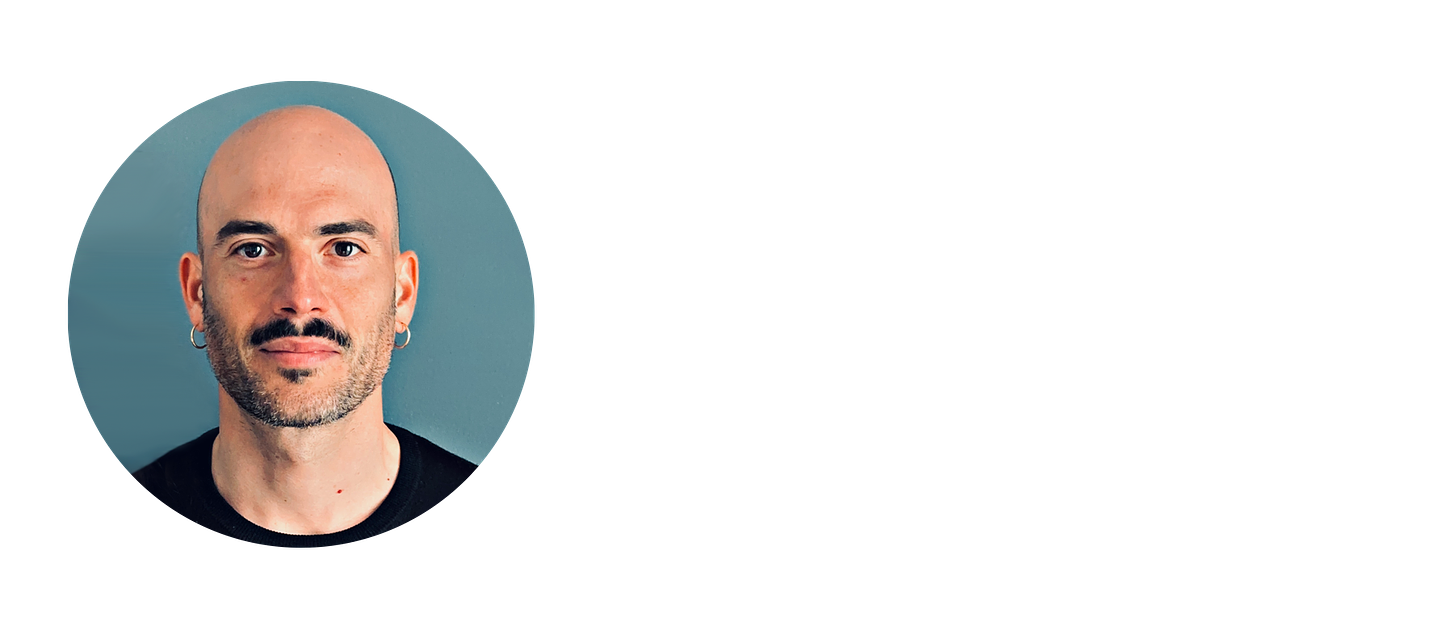My training year ends after Passatore, more or less halfway through the calendar year. As such, this is a good time to look at training, how things are progressing, what went well, and what could be improved.
This blog is a short recap covering these aspects.
Training constraints
In these past six months, I kept making adjustments to my periodization in order to limit as much as possible injury risk and all sorts of other physical issues, with decent success, especially after having struggled much in the previous six months.
Currently, the following seems to work well even though every single hard session (i.e. anything faster than 10 km pace) is a risk for me (I’m very fragile and have a long history of many injuries):
A minimum of 4 days between two hard sessions.
One day off-running per week, if possible after a hard session.
Never force anything.
2 weeks microcycles instead of 1 week, with the idea of packing less in a microcycle.
Non-linear periodization, i.e. do a bit of everything (one session of short intervals, one of long intervals, a tempo / marathon pace run) every 2 weeks, instead of focusing on one aspect of training at a time.
Cycling / hiking to increase / maximize training volume (this might be more helpful for my mental health than for my running performance).
Plus, I will add the following moving forward:
Hard sessions shortened (e.g. if I was doing 8 x 1000m before, I’d do 6 x 1000m now).
Alternate between flat terrain and hills for hard sessions (I can do this only when in Brisighella, while in Amsterdam I don’t have access to hills).
These last points are the main changes I will implement with respect to what I was already doing in the past six months, meaning that I tend to overdo workouts, maybe because I don’t race often (otherwise I break..), and I’ll try to limit myself even when feeling good, and seeing if I can be more consistent with intensity (i.e. experience less physical issues that prevent me from doing hard sessions, as it often happens).
In the three months prior to Passatore I felt really good, and never had physical issues, which I believe is also due to not doing any flat hard sessions, but pushing hard on the hills (which was specific training for a hilly race, but also kept me fit while limiting impact forces). I do like to run flat and ‘fast’, but again, the goal is more consistency and less physical problems, and hills can help.
See below for an overview of my training structure and limiters.
Racing
I raced two races this year, the Barcelona half marathon, and the 100 km del Passatore. Both went well as I raced personal bests (1h 20’ 47” in the half and 9h 25’ at Passatore), and I was very happy with my performance.
For more details about the training leading up to these races and the races themselves, see the blogs below.
Totals
In terms of totals, this year I’ve done more than ever before. I don’t really have weekly goals nor I plan my training with this level of detail. I normally only plan all the key sessions I think I should do (e.g. workouts and long runs with intensity) and then as the weeks go by, I add as much volume as possible without compromising quality sessions. This could mean some long easy runs, trails, cycling, etc. - depending on many factors, e.g. work, where I am, what I feel like doing, the weather, Ale’s training plan, etc. - I like to be very flexible during the week, around the main sessions that I think could be important at a given time based on what I am targeting in the short and long term.
Here are some stats between January and the end of June 2024 (6 months):
Running:
370 hours, 3424 kilometers, 71 000 m of elevation gain
Cycling:
100 hours
Other (strength and passive heat acclimation):
40 hours
I do not count walking and even hiking that is not part of a run, as training. I live in a hilly town and every time I do anything I’m hiking, so I need to draw a line somewhere. Dressed to train = logging training, otherwise, not logging training.
Next steps
The long term goal for me is always the same, racing well at Passatore. I don’t really care about any other event, for a number of reasons I’ve covered elsewhere.
With this in mind, in the next year I will use the first 6 months to get some speed back, targeting a marathon in November, and then shift to longer distances and hills in the new year, as things get more specific before the race.
As my limiters are economy and durability, I will keep aiming for high volume (and hopefully, consistent intensity, but at relatively low frequency), which I think is a must for me to perform decently over distances longer than the half marathon.
Let’s see how it goes.
Enjoy your training!
Marco holds a PhD cum laude in applied machine learning, a M.Sc. cum laude in computer science engineering, and a M.Sc. cum laude in human movement sciences and high-performance coaching.
He has published more than 50 papers and patents at the intersection between physiology, health, technology, and human performance.
He is co-founder of HRV4Training, advisor at Oura, guest lecturer at VU Amsterdam, and editor for IEEE Pervasive Computing Magazine. He loves running.
Social:
Twitter: @altini_marco.
Personal Substack.




